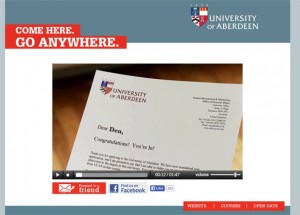
In honor of Earth Day, I spent some time looking for ideas and information about how the increasingly popular “green” movement can/should/will impact corporate recruiting. And I found some interesting items:
- John Sullivan, who often leads the way on HR topics, called attention to the impact of environmentalism back in 2007. In Green Recruiting: Building Your Employer Brand, Sullivan explains persuasively that many of the best candidates (young, well-educated, responsible) will place a high value on corporate responsibility in general, and a commitment to sustainability/green values in particular. And he follows up with a detailed list of ways for companies to promote their green credentials—including (for example) providing interviewers with a fact sheet highlighting environmental values and initiatives; using recyclable paper for recruiting materials; and (very important!) showcasing green on your Careers website.
- Sullivan’s green recruiting article sparked what could be described as a “feisty debate” among commenters. (Other descriptions might be donnybrook, free-for-all, or brouhaha.) Worth reading—not only for the entertainment value, but a a reminder that passions can run high when it comes to the topic of environmental action, even in this relatively tame context.
- Taleo touts its greenness, focusing on “electronic recruiting saves paper.” That’s a valid point, but since erecruiting is Taleo’s business anyway, they might need to look for ways to go a little further. The article does discuss energy savings through software-as-a-service, based on the advantages of server-pooling. Interesting—but there’s a long way to go before SaaS makes a big environmental impact.
- The Fuqua School of Business at Duke University implemented a “no goodies” policy for its campus recruiting events. Noting that “Duke MBA students accrue a significant inventory of giveaways” from the 150+ companies that visit Fuqua annually–and citing the energy costs of shipping, plus the amount of waste created by packaging and discarded items–the school no longer allows companies to bring piles of stuff to recruiting events. Again, interesting. But will other schools follow suit?
- The February 2009 Update newsletter from CareerXRoads contains a short but very thoughtful piece called “Staffing’s Carbon Footprint=1.25 tons of CO2 emissions per hire and why you should care.” They suggest that staffing professionals honestly assess their company’s commitment to sustainability, determine the level of commitment, and analyze the environmental impact of their own departmental activities. They also offer a definition of “green recruiting” that is definitely worth reading (or possibly memorizing).
One point that occurred to me often while exploring resources for this topic: How much of the greenness claimed by companies (whether for recruiting, for public relations, for advertising, or otherwise) reflects real commitment, and how much is mere expediency? Another post, perhaps . . .
Thanks to Luz A. Villa for the image “Living Earth.”
Cynthia Giles has followed a serpentine career path from academia to publishing to marketing and design to information technology and corporate communications. There’s plenty of detail about this journey at www.cynthiagiles.com, but briefly--the common theme has been ideas, and how to present them effectively. Along the way, she became an accidental expert on data warehousing and business intelligence, and for the past ten years she has combined corporate contracting with an independent consulting practice that focuses on marketing strategy for smaller businesses and non-profits.
Having spent quite a bit of time looking for work, and anywhere from two weeks to two years inside a wide variety of American companies—she has given much thought to what works (and what doesn’t) when it comes to creating a great employment fit.


